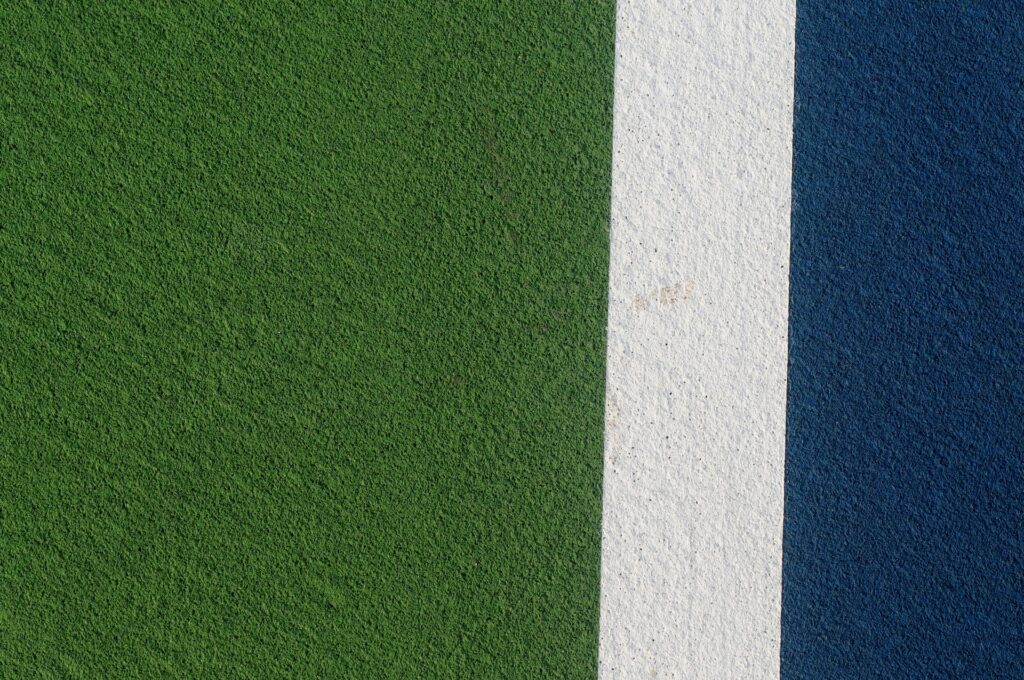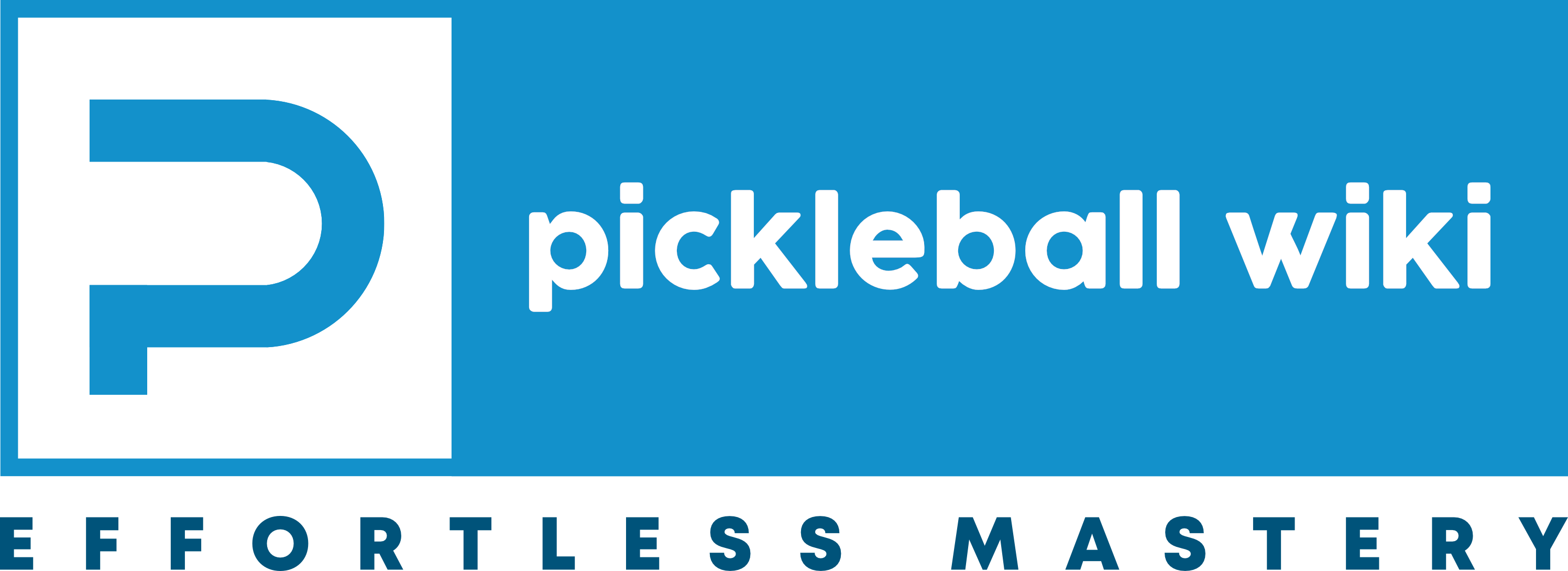In the exciting world of pickleball, understanding the rules and regulations is crucial to elevate your gameplay. You may have experienced moments where a serve grazes the net but still lands in the correct service court, known as let serves.
Navigating these situations correctly is essential for both competitive and recreational players.
In this article, we’ll dive into the specifics of let serves, helping you master this aspect of the game and gain a comprehensive understanding of pickleball’s rules.
Understanding Let Serves in Pickleball
In the world of pickleball, let serves play a crucial role within the game’s rules and regulations. Let serves occur when a served ball touches the net but still lands within the correct service court.
Let Serves: An Overview
A let serve occurs when the served ball touches the net but still lands in the correct service court. In pickleball, let serves are considered playable, unlike in tennis where the server gets another chance to serve. Therefore, the rally continues, and the scoring system remains unaffected.
Impact on Scoring System
When it comes to the scoring system in pickleball, you need to be aware of the following key aspects:
- Only the serving team can score points.
- Points are awarded when the opposing team commits a fault.
With let serves being playable, they don’t impact the scoring system directly. However, if a player fails to return a let serve, it results in a fault, and the serving team scores a point.
Important Rules Regarding Let Serves
Here are some important rules to remember regarding let serves in pickleball:
- The server must serve underhand, ensuring that the paddle head remains below the wrist.
- The ball must be struck below the server’s waist level.
- The server must hit the ball in the air without bouncing it.
Let Serves: When They Occur
Let serves can happen under the following circumstances:
- The served ball touches the net and lands within the correct service court.
- The receiving player or team isn’t ready to return the serve.
Rules Governing Let Serves
In pickleball, there are specific rules that dictate how let serves are handled:
- If a let serve occurs, the server is allowed to serve again without fault.
- There’s no limit to the number of let serves a player can have during their turn to serve.
- Let serves don’t count as faults or points.
To get the most comprehensive coverage on pickleball’s rules, strategies, and growth, head to this all-encompassing pickleball wiki.
Tips for Dealing with Let Serves
To effectively handle let serves in pickleball, consider these tips:
- Always be prepared for the ball to continue in play after touching the net.
- Maintain focus and composure when a let serve occurs.
- Familiarize yourself with the rules and regulations governing let serves to ensure fair gameplay.
By enhancing your understanding of let serves within the context of pickleball’s rules and regulations, you’ll be better equipped to navigate these unique situations, ultimately improving your overall performance on the court.
Serve faults
In pickleball, understanding serve faults is crucial for any player, as it directly impacts your performance within the context of let serves and the overall rules and regulations of the game.
Common Serve Faults
There are several common serve faults you should be aware of to enhance your serving skills:
- Foot faults: Occur when the server’s feet cross the baseline or touch the court during the serve.
- Illegal service motion: The server uses an overhand or sidearm motion instead of the required underhand motion.
- Wrong service court: The server serves the ball into the incorrect service court.
- Net contact: The served ball touches the net but doesn’t land in the correct service court.
Tips to Avoid Serve Faults
Here are some valuable tips to help you avoid serve faults:
- Practice proper foot placement during the serve.
- Master the underhand serving technique.
- Focus on the target service court while serving.
- Ensure you’re aware of the serving sequence in doubles play.
Let Serves and Serve Faults
| Serve Faults | Let Serves |
|---|---|
| Foot faults | No let serve allowed |
| Illegal service motion | No let serve allowed |
| Wrong service court | No let serve allowed |
| Net contact | Let serve allowed if the ball lands in the correct service court |
Differences Between Let Serves and Faults
It’s essential to distinguish let serves from faults to avoid confusion during gameplay. Here’s a summary of the differences:
| Aspect | Let Serve | Fault |
|---|---|---|
| Net Contact | Ball touches the net | Ball touches the net |
| Landing | Ball lands in the correct service court | Ball lands outside the correct service court or doesn’t clear the net |
| Consequence | Server gets to serve again without fault | Server loses the serve or a point is awarded to the opponent |

Service Court
Understanding the service court is essential when learning about let serves in pickleball. As a vital component of the game’s rules and regulations, knowing the service court dimensions and layout will help you navigate let serves with ease and confidence.
Service Court Basics
The service court in pickleball is divided into two sections: the right service court and the left service court. When serving, it’s crucial to ensure you’re standing within the correct service court and targeting the appropriate receiving court.
Familiarizing yourself with the service court layout will enhance your gameplay and adherence to the rules.
Let Serves and the Service Court
A let serve occurs when a served ball touches the net but still lands within the correct receiving court. According to pickleball rules and regulations, let serves are considered valid and play continues without interruption. It’s crucial to grasp the service court’s role in determining the validity of a let serve.
Factors Impacting Let Serves
Several factors can impact the validity of let serves in relation to the service court:
- Serve trajectory
- Receiving court boundaries
- Opponent’s position
By considering these factors, you can better understand and respond to let serves during a match.
For a better understanding of the game and to play like a pro, consult this in-depth overview of pickleball rules and regulations.
Key Service Court Dimensions
| Court Area | Dimension |
|---|---|
| Right service court | 10 ft x 15 ft |
| Left service court | 10 ft x 15 ft |
Tips for Mastering Let Serves and Service Courts
To improve your understanding of let serves and service courts, consider these tips:
- Practice serving from both the right and left service courts.
- Familiarize yourself with the service court boundaries and dimensions.
- Observe and let serves in gameplay to gain a better understanding of their impact.
By incorporating this knowledge of the Service court and let serves within the context of rules and regulations, you’ll elevate your pickleball gameplay and become a more skilled and informed player.
Double-Bounce Rule
The double-bounce rule is a fundamental part of pickleball gameplay. According to this rule, the ball must bounce once on each side of the court before a player can hit it in the air or “volley” it. It applies during the serve and the return of serve, which means:
- The serving team must let the ball bounce once before returning it.
- The receiving team must also let the ball bounce once before hitting it back.
This rule encourages players to develop better control and strategic thinking, rather than relying solely on aggressive volleys.
Let Serves in Pickleball
Let serves refer to serves that touches the net but still land within the designated service court. Based on various observations and user feedback, let serves have the following outcomes:
- The serve is replayed without counting as a fault.
- The server is allowed to serve again with no penalty.
Understanding how to handle let serves can help you maintain the flow of the game and avoid unnecessary interruptions.
Grasping pickleball court lines and measurements can give you an edge on your game, learn more about it here.
Rules and Regulations: Quick Reference
| Rule | Description |
|---|---|
| Double-bounce rule | Ball must bounce once on each side before volleying |
| Let serves | Serves that touch the net but land in the service court are replayed without counting as a fault |
Key Tips for Mastering Double-Bounce Rule and Let Serves
To excel in implementing these rules, consider the following tips:
- Always be prepared to let the ball bounce during the serve and return of serve.
- Be aware of the let serve rule and its implications on your gameplay.
- Practice your serving technique to minimize the occurrence of let serves.
- Study the rules and regulations thoroughly to avoid making errors on the court.
By incorporating the knowledge of the Double-bounce rule and let serves into your pickleball gameplay, you’ll not only adhere to the rules but also develop the skills to become a more strategic and versatile player.
To familiarize yourself with pickleball point system and score calling, visit this comprehensive guide.
Serve Technique
In the world of pickleball, mastering the serve technique is a fundamental aspect of the game. Being proficient in your serve technique not only sets the tone for each rally but also allows you to take advantage of the let serves rule.
Through our research, observations, and user feedback, we’ve gathered valuable insights to help you understand and effectively utilize the let serves rule within the broader context of rules and regulations in pickleball.
Key Components of an Effective Serve Technique
Here are some crucial aspects to consider while executing your serve technique:
- Maintain an underhand serve motion
- Ensure proper serve positioning
- Follow the correct serving sequence
Let Serve Rules and Implications
| Rule | Implication |
|---|---|
| Legal serve | Ball must clear the net and land in the correct service court |
| Let serve | Serve that contacts the net but still lands in the correct service court |
| Second opportunity | Server is allowed to re-serve without penalty after a let serve |
Tips to Improve Your Serve Technique
To enhance your serve technique and make the most of let serves, consider the following suggestions:
- Practice consistency in your serving motion
- Aim for accuracy and placement over power
- Focus on proper foot positioning during serves
By incorporating these insights into your serve technique and understanding the role of let serves within the rules and regulations of pickleball, you will become a more proficient player, better equipped to handle various match scenarios.
Mastering the art of serving in pickleball can be made easy with this comprehensive guide on pickleball serving rules.
Non-Volley Zone
In pickleball, the non-volley zone plays a crucial role in shaping the game dynamics, especially in the context of let serves.
As a player, it’s essential to understand how the non-volley zone affects let serves within the broader framework of the rules and regulations of pickleball.
Understanding the Non-volley Zone
The non-volley zone, also known as the “kitchen,” is a 7-foot wide area extending from the net on both sides of the court. When performing let serves, you need to be mindful of the following:
- Avoid stepping into the non-volley zone while serving.
- Ensure that the served ball does not land in the non-volley zone of the receiving team’s court.
Let Serves and Non-volley Zone Interaction
Let serves occur when a served ball touches the net but still lands in the correct service court. It’s important to note that in pickleball, let serves are played as live balls and not re-served. Here are some key factors to consider when dealing with let serves and the non-volley zone:
- If a let serve lands in the non-volley zone, it is considered a fault.
- If a let serve passes over the non-volley zone and lands in the correct service court, play continues.
Key Rules for Non-volley Zone and Let Serves
| Rule | Description |
|---|---|
| Serve Position | Server must be outside the non-volley zone when serving. |
| Ball Landing | Let serve must land in the correct service court, not in the non-volley zone. |
Tips for Let Serves and Non-volley Zone
To improve your gameplay, consider these tips:
- Practice serving with precision to avoid faults caused by landing in the non-volley zone.
- Develop quick reflexes to handle let serves that pass over the non-volley zone.
- Familiarize yourself with the court dimensions to accurately judge the non-volley zone boundaries.
By incorporating the knowledge of the Non-volley zone and its relationship with let serves, you’ll be better equipped to navigate the rules and regulations of pickleball and ultimately enhance your overall gameplay.
Every player should understand how to avoid faults in pickleball. This guide can help you stay on the right track.
Pickleball Equipment
Having the right pickleball equipment can greatly impact your gameplay, especially when it comes to understanding and executing let serves within the broader context of rules and regulations in pickleball.
Paddle Selection for Let Serves
The choice of paddle plays a crucial role in executing effective let serves. Here are some factors to consider when selecting a paddle:
- Weight: A lighter paddle offers better maneuverability, while a heavier one provides more power.
- Material: Common paddle materials include wood, composite, and graphite.
- Grip size: Choose a grip size that fits comfortably in your hand.
Balls for Let Serves
Pickleball balls come in two main types: indoor and outdoor. The primary difference between them is the number and size of holes. To execute an effective let serve, consider the following:
- Indoor balls have larger holes and are lighter, making them more suitable for controlled shots.
- Outdoor balls have smaller holes and are heavier, providing more durability and wind resistance.
Understanding Let Serves in Pickleball
Let serves occur when the served ball hits the net but still lands in the correct service court. In pickleball, let serves are played and do not result in a reserve or a fault.
| Situation | Outcome |
|---|---|
| Let serve, ball lands in | Continue play |
| Let serve, ball lands out | Fault |
Key Tips for Executing Let Serves
- Practice your underhand serving technique
- Aim for a low trajectory over the net
- Maintain control and consistency in your serves
By selecting the appropriate pickleball equipment and understanding the rules surrounding let serves, you’ll be better equipped to handle this unique aspect of the game and improve your overall performance.
Pickleball Gameplay
In the context of pickleball gameplay, understanding the intricacies of let serves is essential for any player. As part of the larger rules and regulations that govern pickleball, let serves hold a unique position in the game.
Let Serves in Pickleball
A let serve occurs when the served ball touches the net and lands within the correct service court. In pickleball, unlike tennis, let serves are not replayed. Instead, they are treated as valid serves and play continues.
Key Aspects of Let Serves
- Understanding the rules: Familiarize yourself with the official rules concerning let serves. This will help you make better decisions during gameplay.
- Adapting to the situation: When encountering a let serve, be prepared to continue playing, as the serve is considered valid in pickleball.
- Being alert: Stay focused and ready to react quickly when a let serve occurs, ensuring you don’t miss an opportunity to gain an advantage.
Let Serves vs. Faults
It’s important to distinguish let serves from faults in pickleball gameplay. Here’s a comparison to clarify the difference:
| Criteria | Let Serve | Fault |
|---|---|---|
| Net contact | Lands in the correct court | No |
| Service court | Lands in correct court | Lands in incorrect court or out of bounds |
| Replay | No | Yes, next serve or side out |
Improving Your Game
To further enhance your pickleball gameplay, consider the following tips:
- Learn the differences between let serves, faults, and valid serves.
- Practice your serving technique to reduce the occurrence of let serves and faults.
- Develop quick reflexes to respond effectively to let serves.
By incorporating this knowledge of let serves into your pickleball gameplay, you’ll be better equipped to navigate the complexities of the game and make the most of every opportunity on the court.
Conclusion
In conclusion, let serves are an important aspect of the rules and regulations in the sport of pickleball. Understanding the regulations around let serves is crucial for players to ensure fair play and maintain the integrity of the game.
By familiarizing themselves with the rules and practicing their serves, players can improve their overall gameplay and increase their chances of success in pickleball. As with any sport, adherence to the rules and regulations is key to creating a level playing field and promoting sportsmanship among players.
Overall, mastering the let serve in pickleball is an important step toward becoming a skilled and competitive player in this exciting and growing sport.

